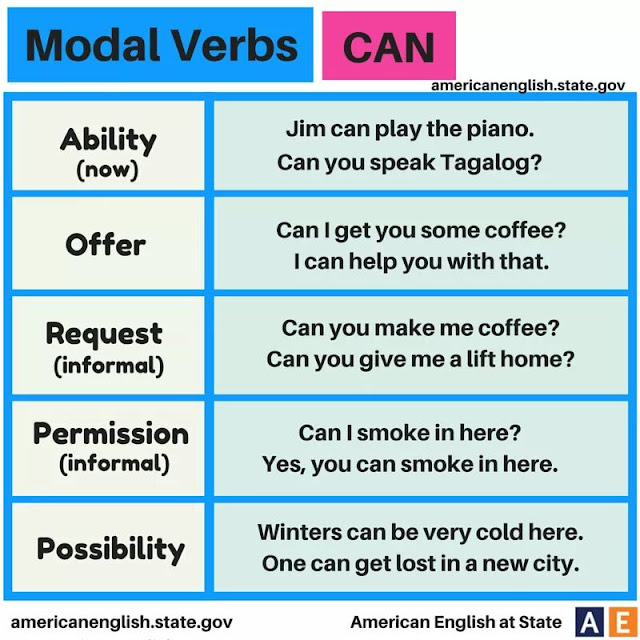Labels
- 100 ways
- Adjectives
- Culture
- English curiosities
- Food for thought
- Grammar
- Idioms
- Jokes
- Level 01
- Level 02
- Level 03
- Level 04
- Level 05
- Level 06
- Level 07
- Level 08
- Level 10
- Level 11
- Level 12
- Level 14
- Level 15
- Level 16
- Level 17
- Level 18
- Nouns
- Proverbs
- Reviews
- Riddles
- Tips
- Tongue Twisters
- Verbal Tenses
- Verbs
- Videos
- Visual dictionary
- Vocabulary
- Word of the week
- level 09
- level 19
About Me
Monday, November 30, 2015
Useful Expressions to Compalin in English Politely
What are complaints?
Complaints are expressions of "displeasure or annoyance" in response to an action that is seen by the speaker as unfavorable.
Examples:
I have a complaint to make. Your pizza is just too salty.
I want to complain about the noise you are making.
Complaints are expressions of "displeasure or annoyance" in response to an action that is seen by the speaker as unfavorable.
Examples:
I have a complaint to make. Your pizza is just too salty.
I want to complain about the noise you are making.
taken from:
Sunday, November 29, 2015
Both, Neither, Either
Both in English indicates two out of a group of two. Either indicates one out of a group of two. Neither indicates zero out of a group of two.
taken from:
Other Words to Describe Happiness
Words to describe Happiness
1.Blissful 6.Gleeful
2.Cheered 7.Ecstatic
3.Delighted 8.Euphoria
4.Exhilarated 9.Jubilant
5.Exulted, exaltation 10.Pleased
1.Blissful 6.Gleeful
2.Cheered 7.Ecstatic
3.Delighted 8.Euphoria
4.Exhilarated 9.Jubilant
5.Exulted, exaltation 10.Pleased
taken from:
Animal Sounds
This is a list of vocabulary related to sounds of animals:
Prepositions in Expressions of Time
Time phrases are words that show the verb tense we need to use
Note: We say at night when we are talking about all of the night:
Example: He sleeps during the day and works at night.
But we say in the night when we are talking about a short time during the night:
Example: He woke up twice in the night.
Note: We say at night when we are talking about all of the night:
Example: He sleeps during the day and works at night.
But we say in the night when we are talking about a short time during the night:
Example: He woke up twice in the night.
taken from:
Difference Between TO and FOR
To
Used to indicate the place, person, or thing that someone or something moves toward, or the direction of something, used to indicate relationship, used to indicate a limit or an ending point
For
Used to indicate the use of something, used to mean because of, used to indicate time or duration.
Used to indicate the place, person, or thing that someone or something moves toward, or the direction of something, used to indicate relationship, used to indicate a limit or an ending point
For
Used to indicate the use of something, used to mean because of, used to indicate time or duration.
taken from:
Thursday, November 26, 2015
Sunday, November 22, 2015
Describing an Artwork
Guidelines for Describing an Artwork
When you describe an artwork, list only things that you can see. Report only facts. Don’t worry about what the work mean, or whether you like it or not. The guidelines below can be used to describe works with or without recognizable shapes. You may not use all of the items listed in the guidelines for a particular work.
1) Label information:
Artist, title, and date of work. Medium (what is it made of). Processes used to make it. Size of art work. Country where it was created.
2) Subject Matter:
a) Figures, animals, objects (trees, sun, clouds, grass, birds, machines, buildings, etc.). If there are no recognizable objects in the artwork, describe art elements: line, color, value, shape, texture, space, movement.
b) Describe what figures, animals and other things that move are doing. How many are there?
c) What is large/small, near/far, in front/behind?
3.) Art Elements:
a) Lines. Are they straight, curved, swirling, jagged, diagonal, vertical, horizontal, continuous, broken, heavy, thin, dark, light? Do they occur at edges where color, value or texture changes suddenly? Are there lines that direct your attention from one place to another?
b) Colors. Are they warm, cook, bright, dull, opaque, transparent? Are they like colors you see in the real world, or different from real world colors? Is there a dominant color? Are there related colors?
c) Values. Are the colors dark? Light? Both? Are there strong contrasts of dark/light? Are there soft contrasts of dark/Light?
d) Shapes. Are shapes realistic, unrealistic, or not representational? Do shapes appear flat or do they appear to have depth (roundness)? Are they geometric (squares, triangles, circles)? Are they organic (curved and irregular edges)?
e) Textures. Are they visible in the artwork? Where? Don’t confuse texture with patterns like checkerboard, stripes, and polka dots.
f) Space. Does space appear deep? If so, is it due to: overlap; placement of small objects high in the picture and large ones low; making objects smaller as they get farther away; linear perspective (converging lines); colors that seem to advance and recede: Does space appear shallow? Why?
g) Movement. If movement is suggested in the work, is it due to: alternating shapes; figures and other life forms doing something; repetition of one thing after another; elements that progress from large to small, small to large, dark to light?
taken from:
Monday, November 16, 2015
Monday, November 9, 2015
Saturday, November 7, 2015
Monday, November 2, 2015
Subscribe to:
Comments (Atom)
































































